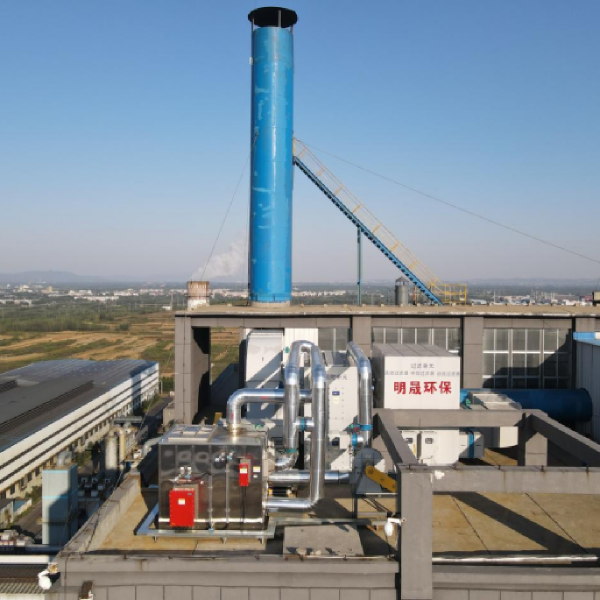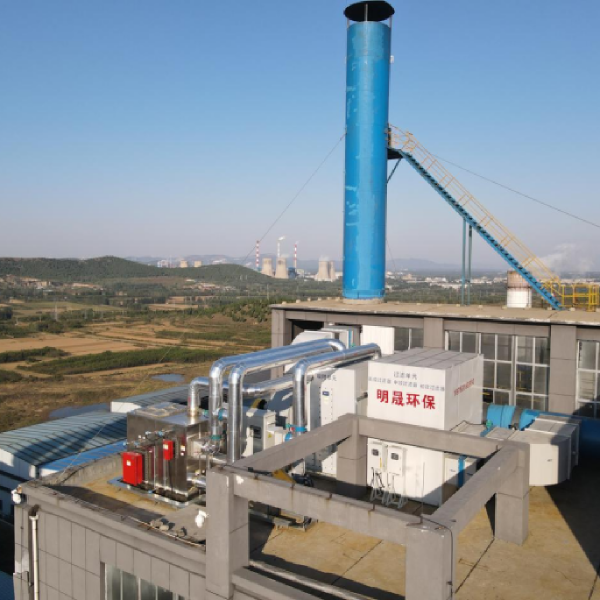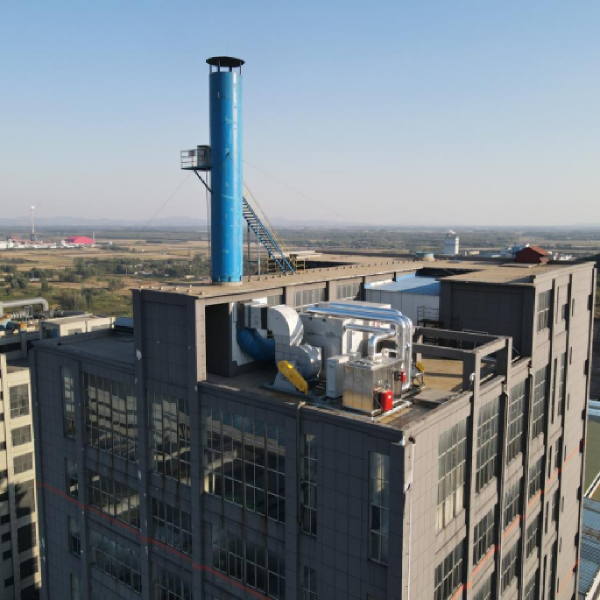tầng 3. Công viên Công nghệ Môi trường Longshan, Quận Zhangqiu, Jinan, Sơn Đông, Trung Quốc [email protected]
Các hợp chất hữu cơ bay hơi (VOC) được định nghĩa là các chất hữu cơ có áp suất hơi bão hòa lớn hơn 133.32 Pa ở nhiệt độ phòng và điểm sôi dưới 50–260°C ở áp suất khí quyển bình thường, cũng như bất kỳ chất rắn hoặc lỏng hữu cơ bay hơi nào trong điều kiện nhiệt độ và áp suất tiêu chuẩn.
1. Phân loại khí thải hợp chất hữu cơ bay hơi (VOC)
Các hợp chất hữu cơ bay hơi (VOCs) được định nghĩa là các chất hữu cơ có áp suất hơi bão hòa lớn hơn 133.32 Pa ở nhiệt độ phòng và điểm sôi nằm trong khoảng 50–260°C dưới áp suất khí quyển tiêu chuẩn, cũng như bất kỳ chất rắn hoặc lỏng hữu cơ bay hơi nào ở nhiệt độ và áp suất bình thường.
Theo cấu trúc hóa học của chúng, VOC có thể được chia thành tám nhóm: alkan, hidrocarbon thơm, alken, hidrocarbon halogen hóa, este, aldehyd, keton và các loại khác. Các thành phần chính bao gồm hidrocarbon, hidrocarbon halogen hóa, hidrocarbon chứa oxi và hidrocarbon chứa nitơ, chẳng hạn như hợp chất loạt thơm, clo hữu cơ, freon, keton hữu cơ, amin, cồn, este đơn giản và phức tạp, axit và hợp chất hidrocarbon dầu mỏ.
Cụ thể, điều này bao gồm:
• Hidrocarbon thơm (benzen, toluen, xylen, styren, v.v.)
• Hidrocarbon mạch hở (butan, n-butane, xăng, v.v.)
• Hidrocarbon halogen hóa (tetrachlorua cacbon, chloroform, clorua vinyl, v.v.)
• Freons
• Rượu, aldehyd, keton, polyol (methanol, propanol, isobutanol, formaldehyd, acetaldehyd, acetone, cyclohexanone, v.v.)
• Éther đơn giản, phenol, epoxit (éther, methylphenol, phenol, éther ethylen, propylen oxide, v.v.)
• Este và axit hữu cơ (ethyl acetate, butyl acetate, v.v.)
• Amine, hợp chất xyanua (dimethylformamide, acrylonitrile, v.v.)
• Các loại khác (metyl bromua, chlorofluorocarbons, v.v.)
Tám nhóm này bao gồm một phạm vi rộng các VOC thường gặp trong khí thải công nghiệp.

2.Nguồn gốc của khí thải Hợp chất Hữu cơ Dễ bay hơi (VOC)
1. Nguồn gốc của Khí VOC tại Doanh nghiệp Hóa Than
Khí thải được tạo ra trong ngành công nghiệp hóa than chủ yếu đến từ hai quy trình: chuyển đổi than thành than cốc và chuyển đổi than thành khí.
1.1 Khí thải từ Than và Than Cốc
Những khí thải này chủ yếu được tạo ra trong quá trình nạp than, làm than coke và xử lý hóa học ở các giai đoạn sau. Trong quá trình nạp than, than thô tiếp xúc trực tiếp với không khí có nhiệt độ cao, tạo ra lượng lớn khói, bụi và các hydrocarbon thơm đa vòng có hại khác nhau. VOCs trong giai đoạn làm than coke chủ yếu xuất phát từ các khu vực sản xuất hóa chất và khu vực xử lý nước thải. Khu vực sản xuất hóa chất được chia thành các phần nhỏ hơn gồm phần xả nước lạnh, phần khử lưu huỳnh, phần amoni sunfat và phần benzen thô, mỗi phần có các chất ô nhiễm và đặc điểm phát thải khác nhau.
1. Phần Xả Nước Lạnh:
Các hợp chất khí dễ bay hơi chủ yếu bao gồm amoniac, sulfua hidro, naphtalen và một lượng nhỏ VOCs. Khí thải xuất phát từ các bể nhựa đường, bể nước amoniac, bể nhựa đường trung gian, đường ống nhựa đường và các bể kín ngầm, có đặc điểm là phát thải liên tục, nồng độ cao và cả trong điều kiện nhiệt độ thấp và cao.
2. Phần khử lưu huỳnh / Ammonium Sulfate:
Khí thải thô chủ yếu chứa amoniac và sulfua hydro với ít VOCs hơn. Các nguồn bao gồm bồn dịch mẹ, bồn tái sinh và bồn dập bọt. Khí thải là liên tục và giàu amoniac.
3. Phần Benzene Thô:
Khí thải không có tổ chức giàu hợp chất nhóm benzene và đến từ các bồn chứa benzene thô, bồn dầu khử benzene, bồn dầu rửa, bồn ngầm và bồn định lượng. Những khí thải này có khối lượng thấp nhưng nồng độ cao.
4. Khu vực Xử lý Nước Thải:
Khí thải bao gồm khí bay hơi và hơi nước. Các chất ô nhiễm chính là hợp chất nhóm benzene, sulfua hydro và nitơ. Các nguồn bao gồm bồn đốt khẩn cấp, bồn điều tiết, bồn kỵ khí, khu vực ép lọc, v.v., được đặc trưng bởi thể tích lớn, nồng độ thấp và hàm lượng ẩm cao.

3.Nguồn thải VOC trong doanh nghiệp Bao bì và In ấn
Bao bì và in ấn có thể được phân loại theo hai cách:
1. Theo loại vật liệu: in trên bao bì giấy, bao bì nhựa, bao bì kim loại và bao bì làm từ các vật liệu khác.
2. Theo kỹ thuật in: lithography (in offset), in lõm, in flexographic, dập nổi, in lưới và các phương pháp khác.
Theo số liệu thống kê, tổng lượng phát thải VOC từ ngành công nghiệp bao bì và in ấn vượt quá 2 triệu tấn. Các phát thải này chủ yếu tập trung trong các quy trình in, sấy khô, ép plastic (phức hợp), và làm sạch. Các nguồn chính bao gồm việc sử dụng mực in, keo dán, dung dịch phủ, dung dịch làm ẩm, chất tẩy rửa và các dung môi hữu cơ khác nhau, phát thải VOC thông qua cả sự bay hơi tự nhiên và quá trình bay hơi liên quan đến sấy khô.
Phần in màu trên nhựa và bao bì linh hoạt là yếu tố đóng góp lớn nhất vào việc phát thải VOC trong lĩnh vực này. Để đạt được hiệu quả tiếp thị và thị giác mong muốn, quy trình sản xuất yêu cầu sử dụng các dung môi hữu cơ như axetat etyl, toluen, butanone (MEK), và isopropanol.
Do đó, các hệ thống xử lý khí thải công nghiệp được cần thiết và ứng dụng rộng rãi nhất trong ngành bao bì linh hoạt liên quan đến in màu trên vật liệu nhựa.

4. Nguồn phát thải VOC trong sản xuất và ứng dụng sơn phủ
Sản xuất và ứng dụng sơn thường bao gồm các quy trình công nghiệp như trộn sơn, phủ sơn (bao gồm lớp lót, lớp giữa, lớp trên cùng và vecni), làm phẳng bề mặt, sấy khô và các bước liên quan khác.
Theo Tiêu chuẩn Phân loại Ngành Công nghiệp Kinh tế Quốc gia (GB/T 4754-2017), các ngành liên quan đến sơn và phát thải VOC thông thường bao gồm:
• Sản xuất nội thất (C21)
• Công nghiệp luyện kim (C33)
• Sản xuất thiết bị mục đích chung (C34)
• Thiết bị công nghiệp chuyên dụng (C35)
• Công nghiệp ô tô (C36)
• Thiết bị giao thông đường sắt, đóng tàu, hàng không vũ trụ và các loại khác (C37)
• Sản phẩm kim loại, sửa chữa và bảo trì máy móc thiết bị (C43)
Trong các ngành công nghiệp này, khí thải VOC chủ yếu được tạo ra trong quá trình pha chế sơn, phun sơn, làm cứng và sấy khô. Các khí thải này đến từ dung môi, chất loãng và phụ gia có trong sơn và vật liệu phủ. Do đó, chính sách bảo vệ môi trường, chiến lược kiểm soát ô nhiễm và thực hành quản lý VOC là rất quan trọng đối với các doanh nghiệp sản xuất sơn.